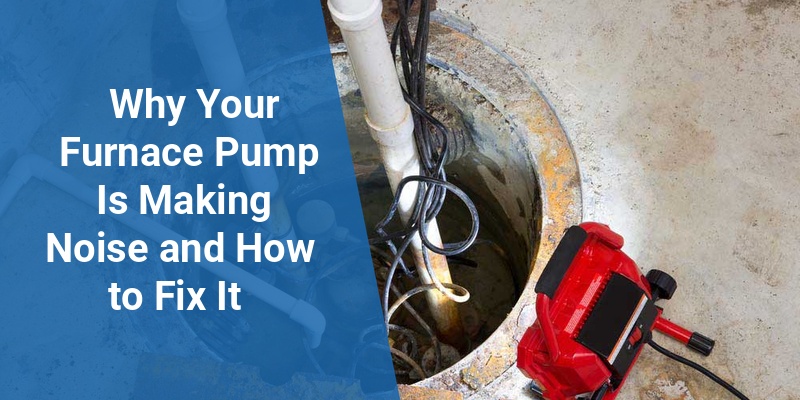A noisy furnace pump can be an unexpected and annoying disruption during colder months. Furnace pumps, also known as circulating pumps, are critical components that ensure hot water or steam moves efficiently through your heating system. When these pumps generate unusual sounds, it often signals an underlying problem requiring attention. Understanding the common causes and solutions for furnace pump noises helps homeowners prevent costly repairs and maintain efficient heating.
| Common Furnace Pump Noises | Possible Cause | Recommended Action |
|---|---|---|
| Grinding or Screeching | Worn Bearings or Lack of Lubrication | Replace bearings or lubricate pump motor |
| Humming but No Water Flow | Electrical Issues or Blockage | Check wiring and clear blockages |
| Rattling or Vibrating | Loose Mounting or Air in System | Tighten mounting and bleed air |
| Knocking or Banging | Water Hammer or Faulty Valves | Install water hammer arrestor or replace valves |
How Furnace Pumps Work in Heating Systems
A furnace pump, or circulating pump, plays a central role in hydronic heating systems, which use hot water or steam to heat homes. The pump circulates heated water from the furnace or boiler through pipes and radiators or baseboards. It ensures even heat distribution and efficient operation. Without a functioning pump, the system would fail to transfer heat, causing cold spots and system overheating.
Understanding this operation helps identify why noise issues arise, often linked to mechanical or hydraulic malfunctions within the pump or connected pipes.
Common Types of Noises From Furnace Pumps
Identifying the type of noise can help pinpoint the cause:
- Grinding or Screeching: Typically stems from worn bearings or motor issues.
- Humming Without Water Flow: Usually indicates the pump is running but water is not moving, possibly due to clogs or stuck impellers.
- Rattling or Vibrating: Often caused by loose components, improper mounting, or trapped air.
- Knocking or Banging: Results from water hammer or sudden pressure changes in pipes.
Causes and Solutions for Furnace Pump Noise
Worn or Dry Bearings
Bearings in the pump motor can wear out or lose lubrication over time, causing grinding noises. This friction may eventually damage the pump shaft and motor.
Solution: Regular maintenance includes lubricating bearings if accessible or replacing the pump if the bearings are sealed or damaged.
Air Trapped in the System
Trapped air within pipes or the pump itself leads to rattling and vibration noises as it disrupts smooth water flow.
Call 888-906-9139 for Free Local HVAC Quotes – No Obligation, Just Savings!
Solution: Bleed air from the system using bleed valves or pump the system until all air pockets are removed.
Blockages and Clogs
Debris or mineral buildup can obstruct the pump impeller or pipes, causing the pump to hum loudly without circulating water properly.
Solution: Flush the hydronic system or clean the pump impeller to remove blockages. Regular water treatment can prevent buildup.
Loose Mounting or Components
Vibration due to loose screws, bolts, or pump brackets can create rattling or buzzing noises.
Solution: Inspect and tighten all mounting hardware to stabilize the pump and eliminate vibrations.
Water Hammer Effects
Water hammer occurs when water flow suddenly stops or changes direction, creating banging noises and pressure surges that can harm pipes and pump components.
Solution: Install water hammer arrestors or shock absorbers in the plumbing system, and replace faulty valves causing abrupt flow changes.
Call 888-906-9139 for Free Local HVAC Quotes – No Obligation, Just Savings!
Electrical Issues
Electrical faults such as loose wires, failing capacitors, or motor problems can produce buzzing or humming noises.
Solution: Have a licensed technician inspect and repair electrical components safely to ensure proper pump operation.
How to Diagnose Furnace Pump Noise Problems
Homeowners can perform some initial diagnostics before calling a professional:
- Turn off the furnace and visually inspect the pump for leaks, loose parts, or visible damage.
- Listen closely to identify the exact type of noise and when it occurs (e.g., startup, continuous running).
- Check system pressure and temperature gauges for abnormalities.
- Bleed air from the system to see if noise reduces.
- Inspect electrical connections for signs of wear or corrosion.
If these steps do not resolve the issue, contacting an HVAC technician with expertise in hydronic heating systems is advisable to prevent further damage.
Preventing Furnace Pump Noise Through Maintenance
Regular maintenance helps avoid pump noise and extends system life:
- Annual inspections: Have a professional check the pump, motor, and system for wear and proper function.
- Lubrication: Apply pump motor lubrication as recommended by the manufacturer.
- System flushing and filter replacement: Prevent debris buildup by maintaining clean water and changing filters if applicable.
- Air bleeding: Periodically release trapped air to maintain steady water flow.
- Electrical checks: Test wiring and motor components for reliability.
When to Replace Your Furnace Pump
Some signs indicate that pump replacement is the best course:
- Persistent loud grinding noises after lubrication
- Pump failing to circulate water despite electrical repairs and cleaning
- Visible corrosion, leaks, or cracks on the pump housing
- Repeated pump motor failures or overheating
- Obsolete pump models without available replacement parts
Investing in a modern, energy-efficient pump can improve heating performance and reduce utility costs in the long run.
Call 888-906-9139 for Free Local HVAC Quotes – No Obligation, Just Savings!
